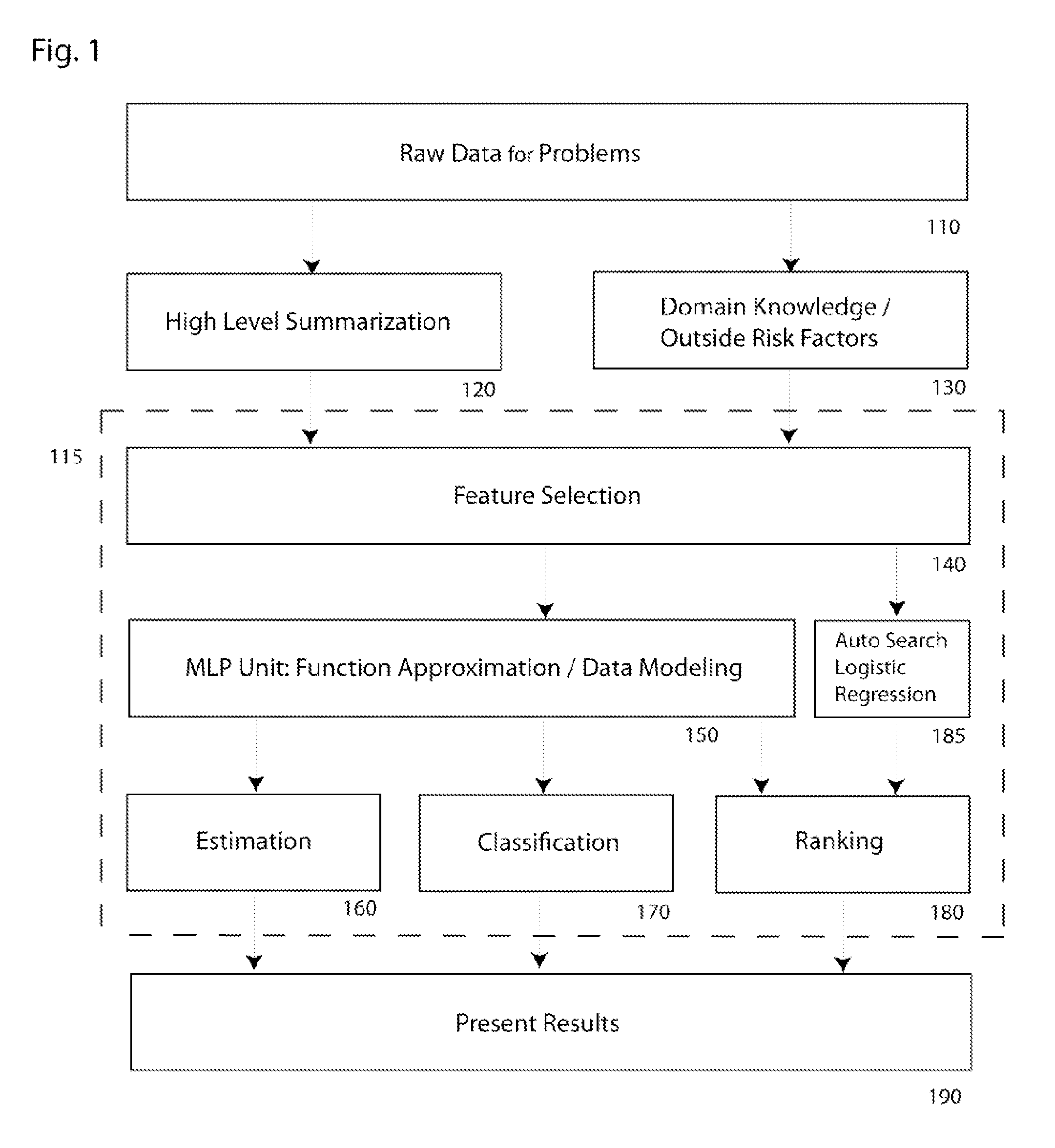Method of universal computing device
a computing device and universal technology, applied in the field of universal computing devices, can solve the problems of mlp neural networks, complex problem of minimization, and trapped in local minima, and achieve the effect of preventing overfitting and optimal structur
- Summary
- Abstract
- Description
- Claims
- Application Information
AI Technical Summary
Benefits of technology
Problems solved by technology
Method used
Image
Examples
Embodiment Construction
[0037]FIG. 1 illustrates, in block form, a method for implementing universal computing device to solve many problems with the tasks of estimation, classification, and ranking, according to the present invention. In block 110, raw data for problems is identified and obtained. The raw data is applied for high-level summarization, in block 120, to create basic features. In block 130, domain knowledge from experts or risk factors from other methods are possible to improve the quality of data with additional features. A set of processed data is then developed for applications with basic and additional features.
[0038]In more detail, still referring to the invention of FIG. 1, the raw data (block 110), the high-level summarization (block 120), risk factors, and the domain knowledge (block 130) are always problem specific. Once the processed data has been established with input features and corresponding desired outputs, this data is applied to a universal computing device in block 115 (con...
PUM
 Login to View More
Login to View More Abstract
Description
Claims
Application Information
 Login to View More
Login to View More - R&D
- Intellectual Property
- Life Sciences
- Materials
- Tech Scout
- Unparalleled Data Quality
- Higher Quality Content
- 60% Fewer Hallucinations
Browse by: Latest US Patents, China's latest patents, Technical Efficacy Thesaurus, Application Domain, Technology Topic, Popular Technical Reports.
© 2025 PatSnap. All rights reserved.Legal|Privacy policy|Modern Slavery Act Transparency Statement|Sitemap|About US| Contact US: help@patsnap.com



